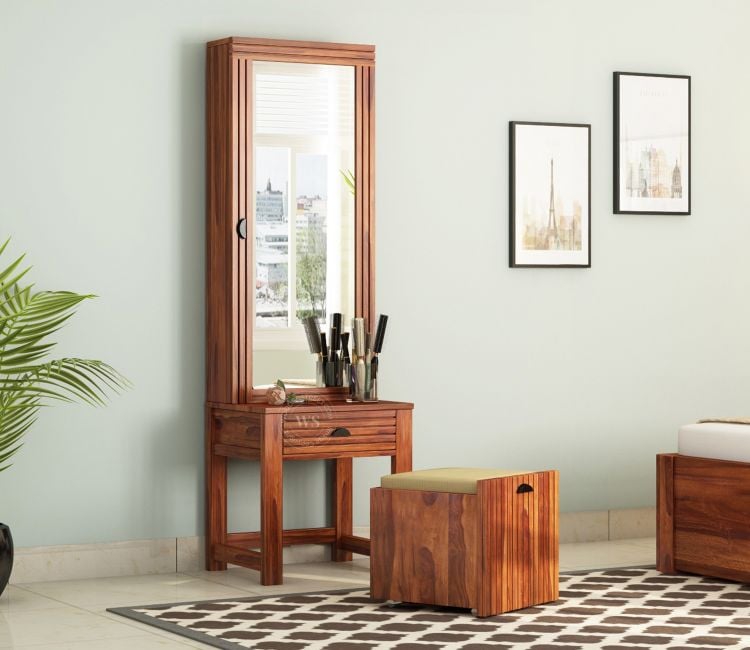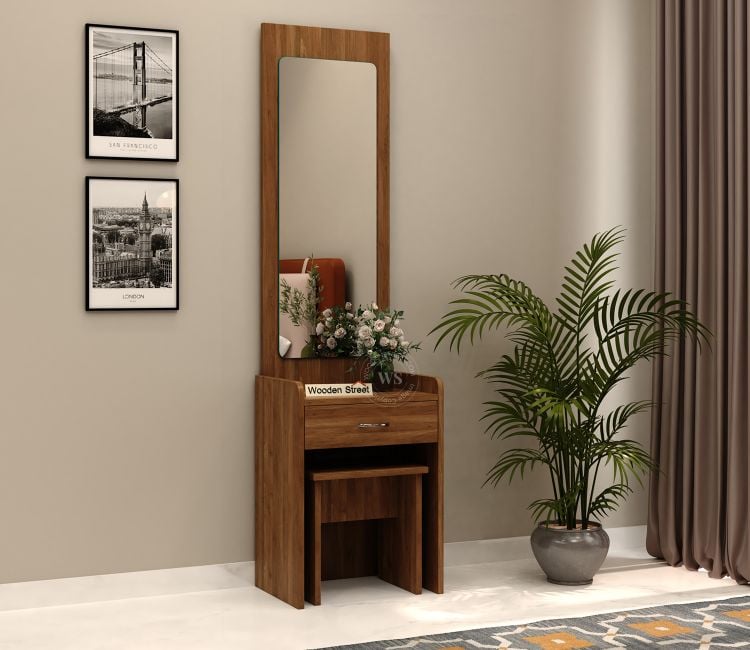Beyond Dawlish
The dressing table, an elegant and functional piece of furniture, has been a staple in bedrooms for centuries. From its humble beginnings as a simple washstand to the modern vanity station complete with mirrors, lighting, and storage, the dressing table has undergone remarkable transformations over time. It reflects not just changes in design and functionality but also shifting cultural values and lifestyles.

Origins in the 17th Century
The concept of the dressing table began to take form in the late 17th century, primarily in European households. Initially, it was known as a "toilet table" or "toilette," a term derived from the French word toile, meaning cloth. Women would use a small table draped with fabric to hold grooming items, such as combs, perfumes, and cosmetics. At the time, grooming was a private ritual, and these tables were used behind screens or curtains to maintain modesty.
The aristocracy, especially in France and England, played a major role in popularizing these early dressing tables. These pieces were often elaborate, featuring ornate carvings and luxurious materials to reflect wealth and sophistication. The presence of a mirror above or attached to the table soon became a common feature, transforming it into a more practical space for personal grooming.
The 18th and 19th Centuries: Symbol of Refinement
As the 18th century progressed, the dressing table became more refined and standardized in form. It was no longer just a makeshift surface but a dedicated piece of furniture designed for daily use. With the influence of neoclassical design during this period, dressing tables began to exhibit symmetry, delicate legs, and polished wood finishes.
In the 19th century, the Victorian era brought further embellishment and detail to the dressing table. During this time, personal grooming rituals became more elaborate, and the dressing table evolved accordingly. Multiple drawers were added to store jewelry, cosmetics, hair accessories, and brushes. Larger mirrors were introduced, often with attached side wings that could be angled for better visibility.
Notably, the dressing table was now considered an essential component of a well-furnished bedroom, particularly in upper and middle-class homes. It became not only a utility item but also a symbol of femininity and social status.
The 20th Century: Functional Meets Fashionable
The early 20th century witnessed a shift in design aesthetics. Art Deco influence in the 1920s and 1930s brought in sleek lines, mirrored surfaces, and geometric patterns. Dressing tables of this era emphasized glamour and modernity, often matching other bedroom furniture to create cohesive sets. The mirror remained central, but lighting began to play a more prominent role. Integrated lamps or sconces allowed users to achieve better visibility, especially during nighttime routines.
Post World War II, home design moved toward functionality and minimalism. Dressing tables became more accessible to the broader population, with manufacturers producing simplified versions that focused on practicality rather than opulence. In many households, these tables doubled as desks or writing tables, reflecting a shift in how space and furniture were utilized.
With the rise of fashion media and the growing importance of personal style in the mid-20th century, the dressing table remained relevant. It was often depicted in movies and magazines as a place where glamorous women prepared themselves, reinforcing its image as a personal sanctuary.
The Dressing Table in Contemporary Homes
Today, the dressing table continues to evolve in both form and function. Modern designs cater to diverse needs, ranging from minimalist Scandinavian styles to multifunctional units with ample storage. With increasing attention to home aesthetics and self-care routines, the dressing table has found renewed popularity, particularly in urban settings where efficient use of space is crucial.
Contemporary dressing tables often incorporate technology—built-in lighting with adjustable brightness, USB ports for charging devices, and even touch-screen mirrors with Bluetooth connectivity. These additions enhance the user experience while maintaining the core function of the piece: a dedicated space for grooming and personal care.
The role of the dressing table has also become more inclusive. No longer reserved for women alone, it is now used by people of all genders who value a personal area for self-preparation, organization, and relaxation.
Cultural Impact and Timeless Appeal
Beyond its practical use, the dressing table has made a lasting impact on culture and art. It has been featured in countless paintings, novels, films, and plays as a space of transformation, privacy, and self-expression. In literature, it often symbolizes introspection or the preparation for a significant life event. In art, it captures the quiet elegance of daily rituals.
Despite changing trends, the dressing table remains a timeless piece of furniture. Its evolution tells a broader story about lifestyle, design preferences, and societal changes. From aristocratic salons to compact city apartments, the dressing table has adapted to serve the needs and tastes of every era.

Conclusion
The journey of the dressing table from a modest toile stand to a smart, multifunctional vanity reveals more than just aesthetic shifts. It reflects how deeply our daily rituals and personal spaces are intertwined with cultural identity and progress. While styles and materials may change, the essence of the dressing table—as a space for self-care and individuality—continues to hold its place in the modern home.




